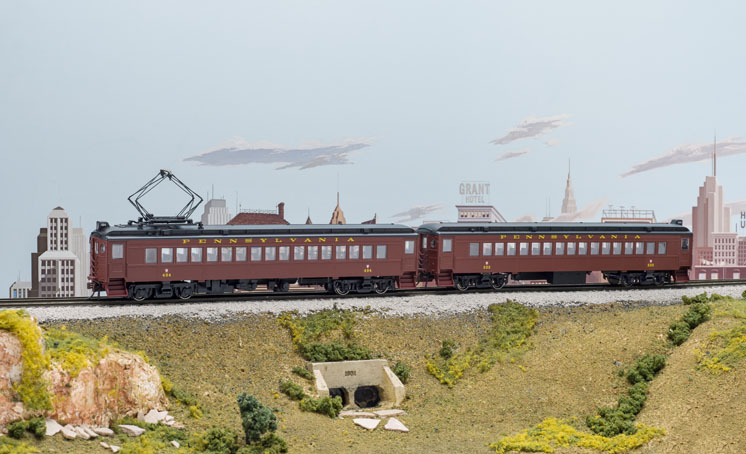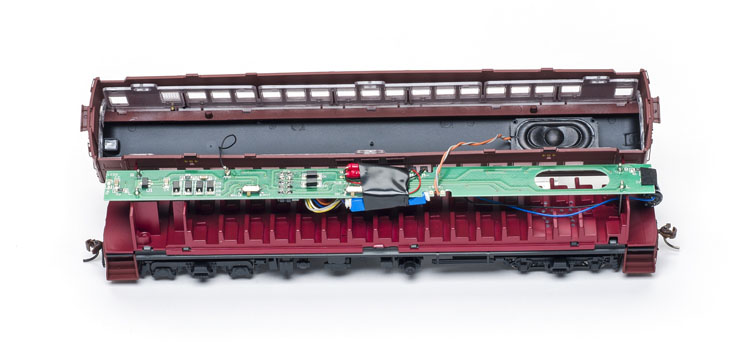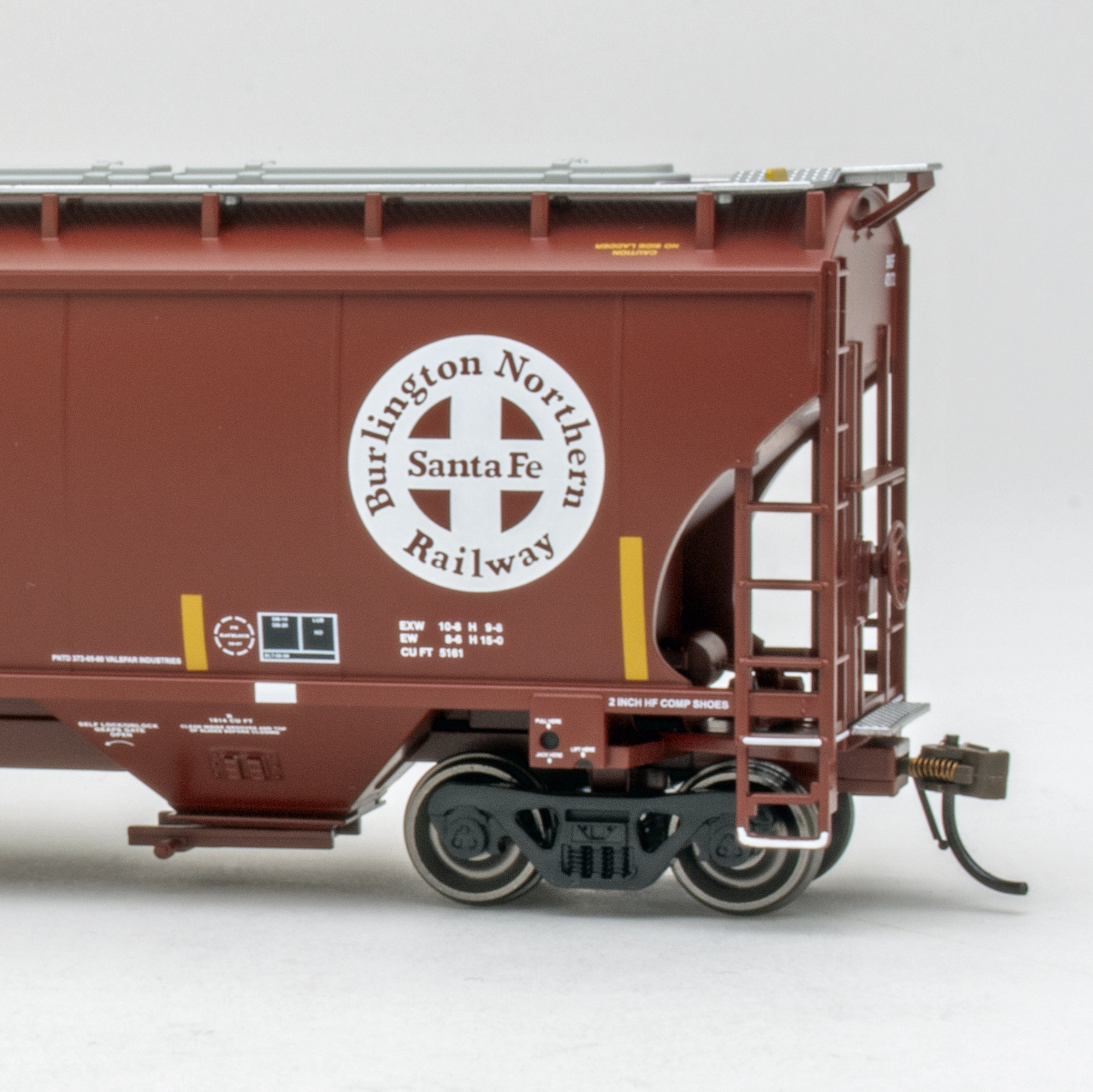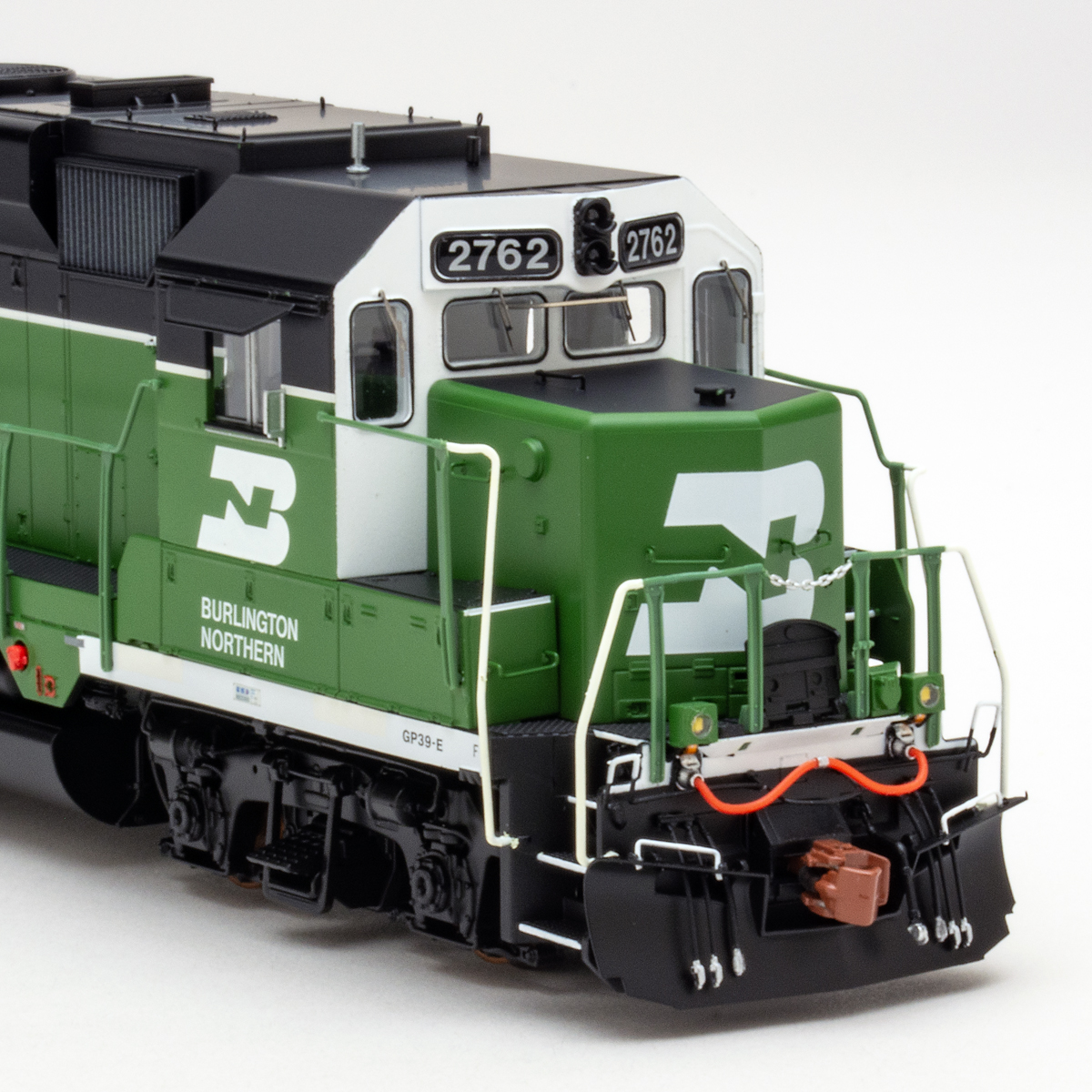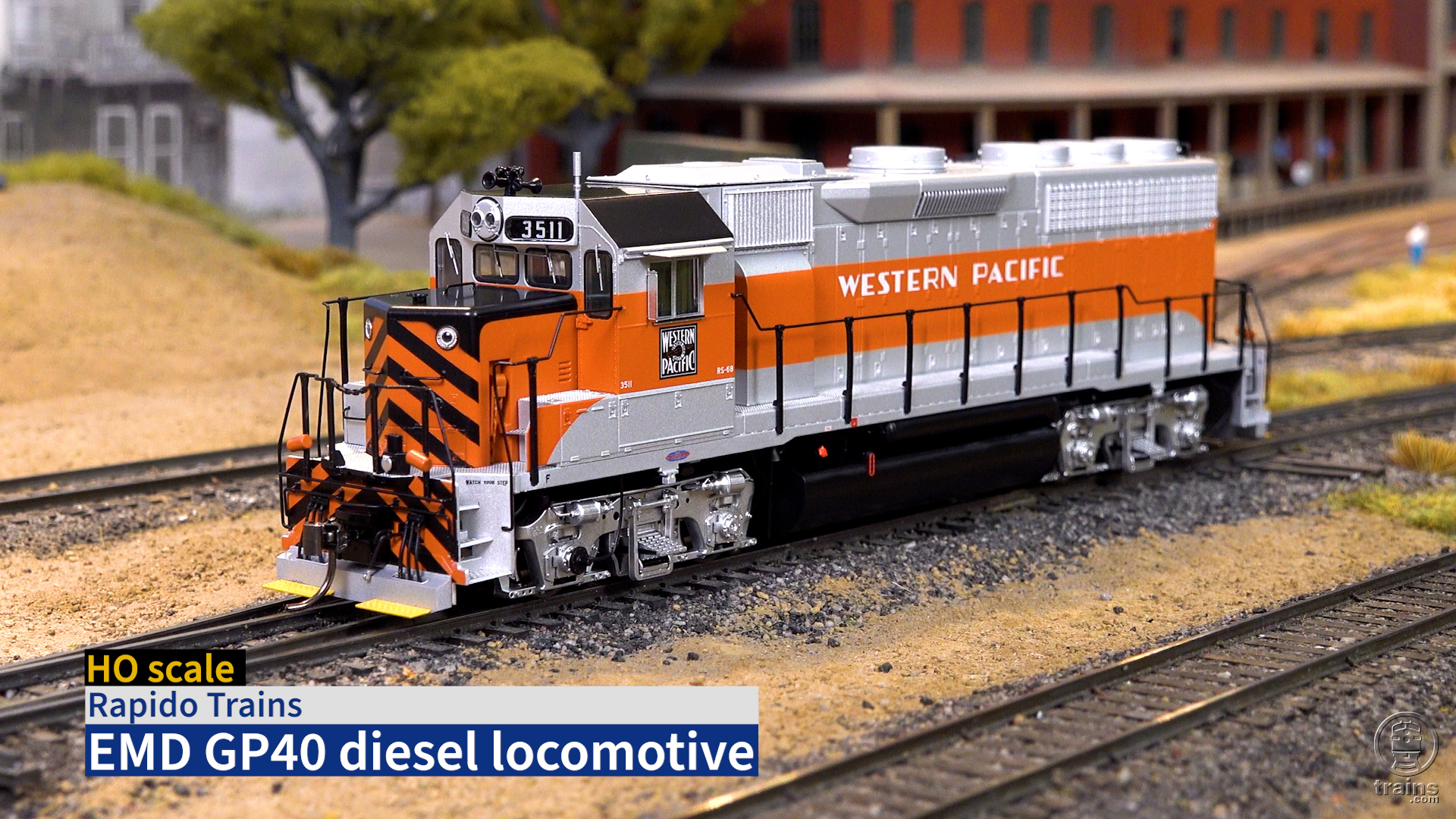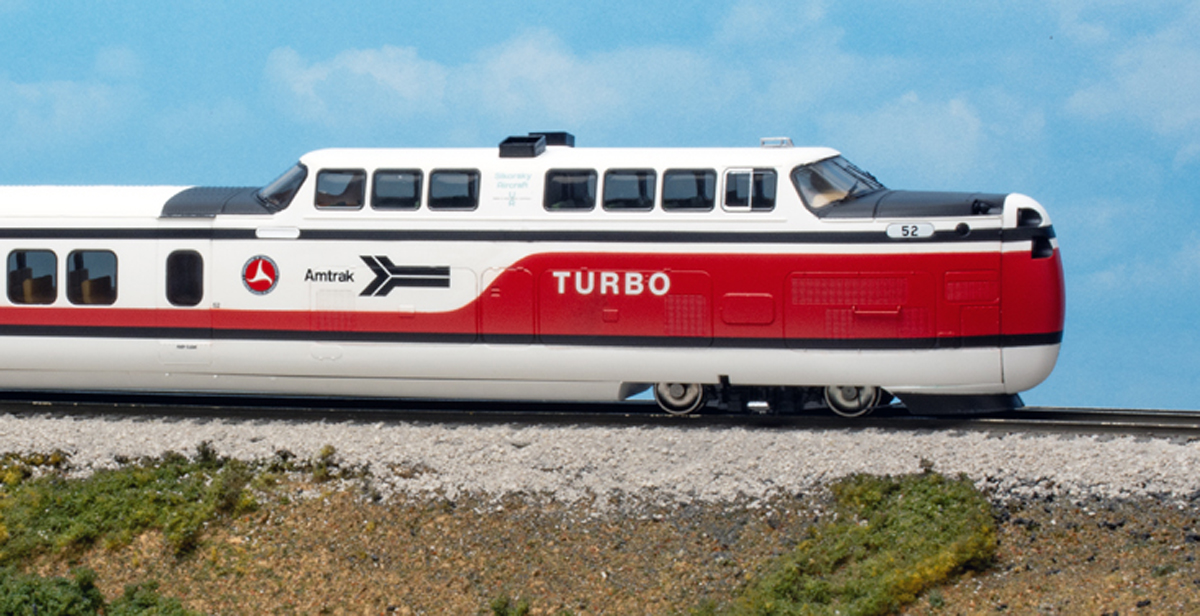Here comes the happy couple! Con-Cor has added to its line of Pennsylvania RR MP54 commuter cars with models of the semi-permanently coupled married pairs, or bride-and-grooms. We published tests of the first release in the November 2012 Model Railroader. These new cars have modified roofs with a headlight at just one end, and our samples came with Con-Cor’s factory-installed Digitrax sound decoder in the powered car.
The Pennsylvania RR was known for its electrified lines in the Northeast. The focus of the project was efficiently moving commuters in and out of Philadelphia, and then New York City. To do this, the Pennsy built hundreds of MP54 multiple-unit cars between 1915 and 1951, with a peak of 481 in service in early 1953.
As the railroad became familiar with the operating characteristics of the fleet, efficiency experts in the 1930s recommended building more powerful cars designed to pull unpowered trailers. These cars shared motor parts with the then-new GG1 electrics. There were 38 coaches built in three batches in 1932, ’34, and ’37. The PRR also had eight baggage-coach combinations. All 43 of the trailers were coaches. Since there were 48 power cars and 43 trailers, this meant that on occasion, a power car would run by itself. There’s also evidence that power cars were coupled together at their blind (no headlight) ends.
A 1973 equipment roster from the Southeastern Pennsylvania Transportation Authority (SEPTA), which ran commuter trains under contract with the existing Philadelphia-area railroads, indicates 28 pairs were still available for use from Penn Central.
All of the superlatives heaped on these models in the 2012 review are still true today. The paint is smoothly applied with sharp, clear lettering. Metal details include the grab irons and handrails, including the curved railings on the bottoms of the vestibule trap doors that impressed us before.
The only detail discrepancies I could find was with modifications made to the “blind” ends of the cars. The etched- metal pilots are attached to the trucks on both ends of the models. Photos in Pennsy Power II by Alvin F. Stauffer (Stauffer Litho Plate Co., 1968) show the blind ends of the car didn’t have them. A photo in The Keystone: Vol. 43, No. 4 shows the blind end windows of trailer no. 39 plated over, but it’s unclear if this photo, taken at the Wilmington Shops in 1965, is of an in-service car or one undergoing modification.
Other equipment, such as the handrails below the round windows, the whistle above the left window, the windshield wipers, and the marker lights in the upper corners, were also missing from car 39’s end.
A small panel is cemented into the headlight opening on the roof of the non-powered end of the power car, opposite the pantograph. The prototype didn’t have headlights above the drawbar connections. A similar solution is used on the roof of the trailer. MP54s had a single power truck on the pantograph end of the car.
All the sources I checked showed the trailers were originally numbered 1-43. The first seven were then renumbered 44-50 in 1957 to avoid confusion with a group recently acquired ex-Great Northern boxcabs, which were given those numbers. Our sample trailer car was numbered 222, but I could find no evidence any multiple-unit MP54s wore this number. A 1957 roster showed power car 494, our sample, was connected to trailer 37.
Inside the car, whether powered or trailer, you’ll find wide-open seating from end to end. All other features remain the same as in Steven Otte’s 2012 review. The big difference this time was the Digitrax sound decoder taped to the bottom of the printed-circuit (PC) board at ceiling level and an oval speaker secured to the bottom of the roof above a cutout in the PC board. The decoders are sold as options to the base car. Con-Cor’s website (www.con-cor.com) has instructions to take advantage of free installation.
A few wires, leading to the track power and a capacitor for the sound system mounted in the vestibule, are visible inside the car. They’re not too noticeable from most viewing angles.
Plastic knuckle couplers are frame-mounted in draft-gear boxes at the correct height. I did have to adjust one low trip pin. Wheels on the powered car were in gauge, but three of the four wheelsets on the trailer were slightly tight. A gentle twist got them back into gauge.
To test the Digital Command Control and sound of the cars, I took them to the test track. Compressor sounds and traction motor blowers kicked on when I placed the car on powered track.
The whistle replicates the Wabco Trombone whistle used on these cars. Other sounds available from the function buttons on our DCC throttle include passing crossing bells on F1; a continuous, latching horn sound on F2; track squeals on F3; and a grade-crossing sequence at F4. A three-step volume control, high-low-off, is accessed through F5.
The car started moving in speed step two at 4.3 scale mph. Top speed was 97 scale mph in speed step 28. The prototype was designed to reach 65 mph maximum, but they rarely traveled that fast. The model’s top speed can be lowered by adjusting the decoder’s top voltage (configuration variable 5). Once underway, motor whine and the clickety-clack of wheels on jointed rail played.
With that traction tire on each truck, our powered car registered 2.88 ounces of drawbar pull, equivalent to 13 HO scale passenger cars. Our sample had no trouble pushing or pulling its trailer up and over the 3 percent grade on our Milwaukee, Racine & Troy staff layout. Also, the pair operated flawlessly through yard ladders whether pushing or pulling.
Direct-current (DC) operation was less satisfying. The powered car’s sounds started and the car began moving at 20 scale mph at 7.5V. Top speed was 129 scale mph at 12V. The only sounds were the track noise and random compressor sounds, which are automatic.
Pennsylvania RR’s MP54s lived long lives. There were still 59 in operation in 1977, and some reportedly toiled into the early 1980s carrying passengers to and from the urban areas of the Northeast.
If your modeling takes place under PRR catenary, this variation of the owl-eyed commuter cars would make an interesting addition to your layout.
Price: $399.98 (DC); available with factory-installed DCC sound (add $84.98) or DCC, motor-only (add $42.98) decoders
Manufacturer
Con-Cor International Ltd.
8101 E. Research Court
Tucson, AZ 85710
www.con-cor.com
Era: 1932 to 1968, as decorated
Road numbers: 494-222, 459-467, 463-317, 483-6, 4272-496, 4274-397
Features
• 8-pin socket for DCC decoder on DC models
• All-wheel drive and power pickup
• Detailed interior
• Detailed underbody
• Digitrax sound or motor-only decoders (factory-installed DCC versions)
• Interior lighting
• Operating headlights
• Plastic knuckle couplers mounted at correct height
• RP-25 metal wheelsets, in gauge
• Selectable working pantograph or 2-rail power pickup
• Weight: 9 ounces





